Save Money With the Pantry Method of Meal Planning
Use the pantry method of meal planning to cut food expenses, reduce food waste, increase healthy eating, and save money. Take control of your diet and food, and have no fear of shortages with this simple method of meal planning.
Food is one of the biggest discretionary expenses in your family budget. Savings here can translate into getting to your dreams faster. Stats reveal that North Americans toss out 1 lb of food per person per day — The average family wastes almost 1,500 lbs of food every year. That’s money that could be used to get you closer to self-sufficiency.
The Pantry method of menu planning can help you reduce your food waste and your expenditure on food, every month. It can increase your food sovereignty by giving you control over what you eat and where you source the ingredients. It can support your local economy of small family farms and local food. It can give you a healthier diet, free of gm foods and hidden sugars and chemicals. It can reduce the BPAs and Phthalates in your diet by using less food packaging. It reduces your carbon footprint by fewer trips to the market and fewer plastics in your life. It reduces waste — less garbage to go to the landfill.
Here’s how the Pantry Method works:
You stock your pantry with staples — not processed food but the ingredients to make from scratch the basic food that your family consumes:
Things like flour, salt, spices, dried beans, rice, seeds, seasonal vegetables, seasonal fruit, coconut oil, olive oil, farm-sourced meat, dairy. You can have some pre-mixed staples, like a dried cream soup base, but most of your storage should be ingredients not prepared foods.
When fruits and vegetables are in season you buy them in bulk and preserve them for the off-season — can your tomatoes, make salsa, dry apples, cherries, and pears for winter use.
Simplify your meals: You can create a full and varied meal with a protein source (beans, meat, fish, nuts, eggs, cheese), a carbohydrate (optional if you are on a low carb diet — rice, potatoes, bread), 2 vegetables (home-canned tomatoes, frozen veggies, greens from the garden) 1 fruit (seasonal or home frozen, dried or canned).
Sauces and salad dressings can be made at home with ingredients that are in your pantry, saving you money, and allowing you to control the ingredients.
Shopping with a pantry list helps you avoid impulse buying, saves time because you aren’t clipping coupons or reading sales flyers, allows you to control the ingredients — avoiding genetically modified food.
The Pantry Method of meal planning uses up what you already have on hand so you don’t need to run out to buy 1 or 2 ingredients, tempting you with the store sales to buy more than you need. Since you plan your meals around what’s already in your house, less food is wasted. The pantry method of menu planning allows you to buy in bulk or even buy as a co-op and save money. I shop less at Costco and more at the bulk food store. Buying in 20 lb. bags instead of small bulk bags cuts the price in half.
Preparing meals from staples instead of using prepackaged convenience foods will help you eat a healthier diet and lose weight — you are eliminating MSG and hidden sugars that raise your insulin levels and create hunger signals even when you’re full. You can avoid soy, canola, corn and cottonseed oil that is genetically modified. Almost all prepackaged food contains one or more of these GM ingredients.
The initial investment may seem high as you replace small purchases with bulk bags — but the payback will come as you only replenish what you need.
For instance, I haven’t been grocery shopping in 3 weeks — that’s $0 spent on food. This week I’ll need to buy a bag of flour. That’s will be $12 spent on groceries in the last 4 weeks. Yes, I have a farm and have dairy and meat on the hoof. I have a garden that just started producing. I’ll take that excess produce and freeze it for the winter. So we’ll have veggies ready all winter to eat. I still have some that I froze last winter and we are still eating. My list of necessary staples is short because we homestead. I buy in large bags and store them in metal garbage cans in a cold room in the basement.
Here are my list of Pantry staples:
Bread Yeast
Baking Powder
Sugar – white, brown, icing sugar
Flour — both whole wheat and gluten
Brown rice – basmati and short-grain
Whole Flaxseed
Old Fashioned Oatmeal
Honey — from the grower
Maple Syrup — from the grower
Dried beans — kidney beans, lentils, adzuki beans, garbanzo beans
Peanut butter
Organic, fair-trade coffee
Tea
Celtic Salt
Olive Oil
Coconut Oil
Sesame Oil
Lemon Juice
Vinegar (white, cider, and balsamic)
Tomato paste
Canned salmon
Spices — cinnamon, nutmeg, ginger, pepper, chilli, turmeric, cumin, basil and oregano
Popcorn
Coconut Creamed Concentrate (for curries)
Poppy Seed
Sunflower Seed shelled
Dijon Mustard
Dark Chocolate Chips (this is a splurge)
Butter
Before we were growing our own, I also added
Hamburger, chicken, beef or lamb (from the farmer)
Eggs (from the farmer)
Cheese
Goat’s Milk
Seasonal fruits and vegetables are bought from the farmer and frozen, canned or dried when at the peak of freshness.
Advantages of the Pantry Method:
I spend less time shopping. There is always food on hand so no need to go to a restaurant to eat. I spend less on groceries. We use food up instead of tossing it — dried beans don’t have a best before date.
What I don’t buy at the grocery store:
Packaged, convenience foods — like KD, Ricearoni, pasta, canned soup, pudding or jello
Pancake mix or biscuit mix
Crackers, cookies
Chips, pop, and other snack food
Bread
Salad dressing or mayonnaise
Barbecue sauce, ketchup,
Canned vegetables and beans
Canned fruits
Boxed cereals
Dog food (we make our own)
Cake mixes
Ramen Noodles
Instant Chocolate drink mix
Crystal juice mixes
Frozen juice
Frozen french fries
Dried fruit
Nuts (we use sunflower seeds or purchase in the fall for Christmas baking)
Pickles, relish, jams and jellies
Tofu
These foods can all be made from scratch from what you have in the pantry — allowing you to avoid GM foods, and control the amount of sugar and high fructose corn syrup in your diet. Some food we’ve decided to live without or make ourselves, in season, based on our family preferences.
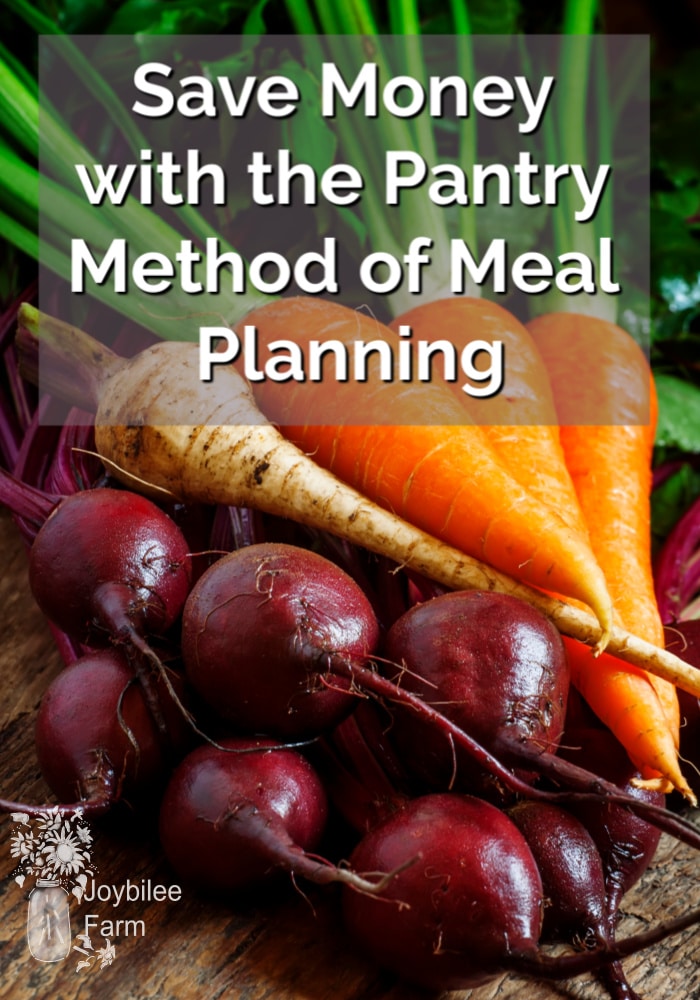
Disadvantages:
It takes more time to plan the pantry system of meal planning initially and replace convenience foods with meals you cook from scratch.
Your body will detox as you replace convenience food with fewer chemical alternatives — which will give you food cravings.
The initial investment in bulk bags and storage containers is higher than doing what you’re doing now.
You need a way to preserve food for long-term storage — a freezer, food dryer, canning equipment.
Back to You:
If you are currently stocking up your shelves with convenience foods could you make one change this week that would save you money, reduce your dependence on the “food system” and increase your food sovereignty and the health of your diet?
What convenience food that you are now buying, could you replace with a homemade alternative that saves you money and is better for your family?
Could you save money and get to your dreams faster by changing how you plan your meals? Tell me what you think in the comments.


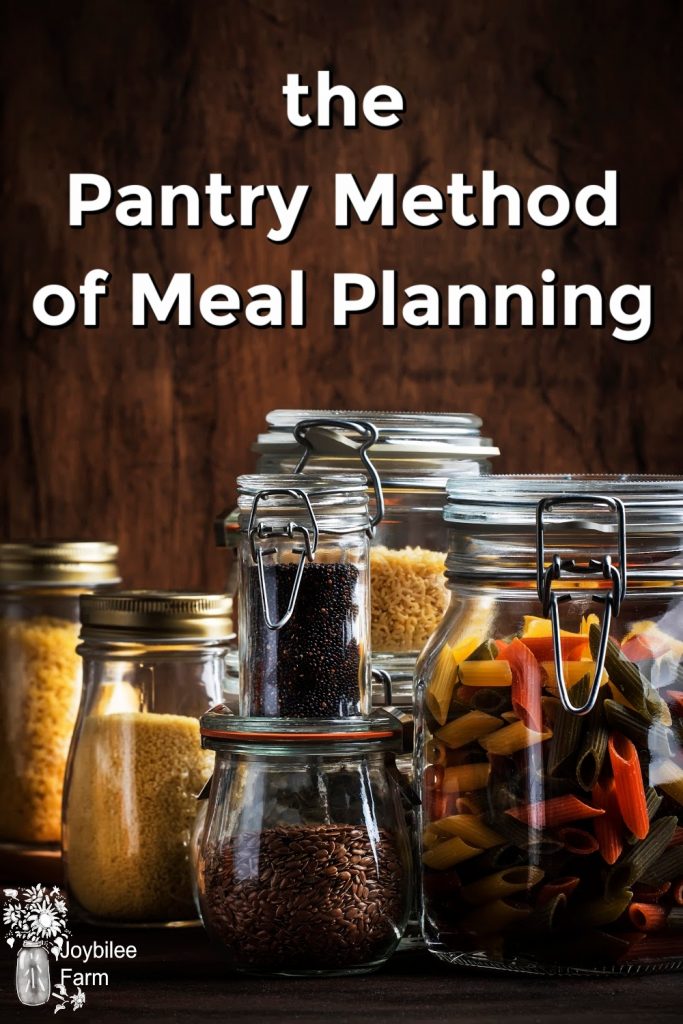
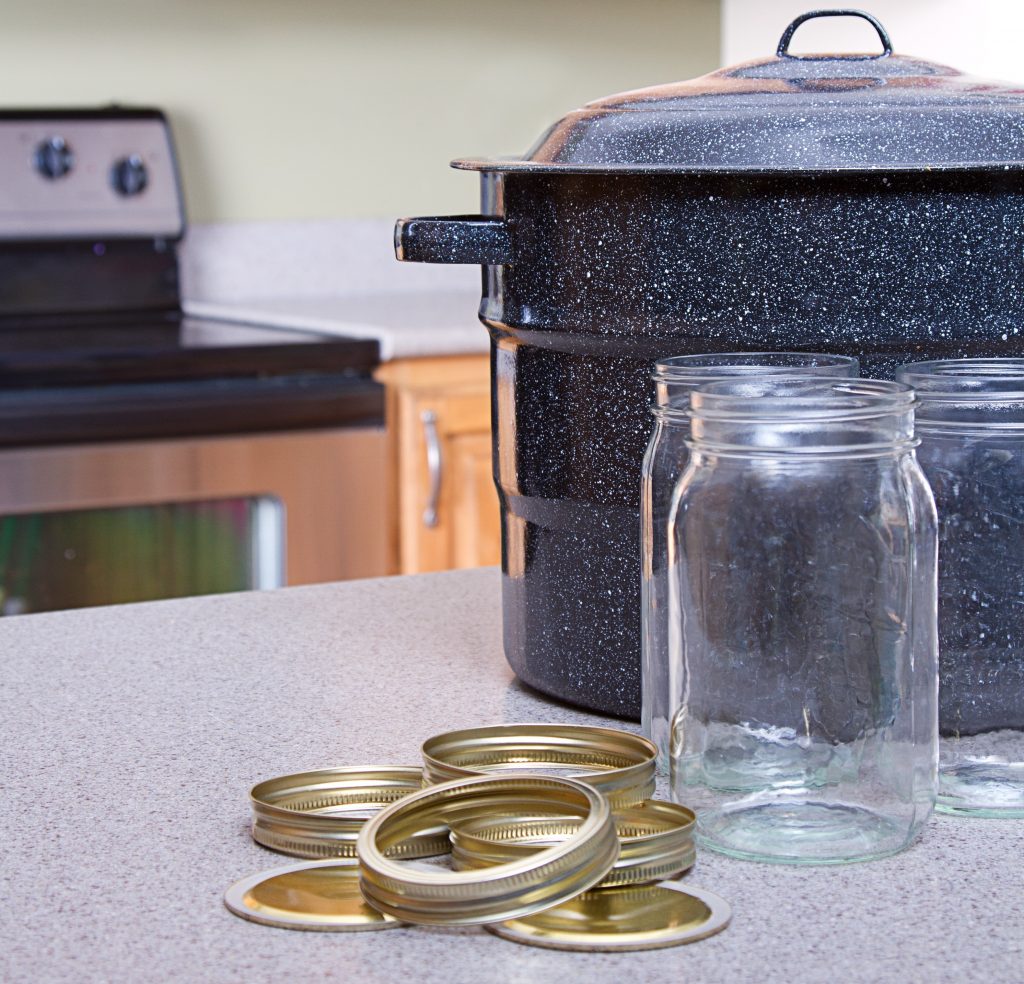
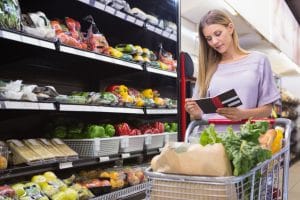

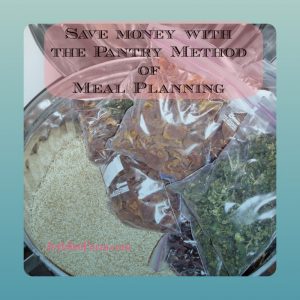

It’s like you’re on a misosin to save me time and money!
That’s a great start, Quinn.
Here’s a recipe adapted from the “More With Less Cookbook” by Doris Janzen Longacre (1976) — one of my favourite cookbooks.
Ketchup recipe — makes 8 pints for canning:
4 qt. tomato pulp
4 large onion
Quarter and cook tomatoes with onions. Pour into food mill or lined sieve and allow thin juice to flow out. Then press out thick pulp. Measure 4 quarts of pulp.
Combine in a large kettle:
4 qts. tomato pulp
2 T. celery salt
4 t. salt
3 c. sugar
2 c. white vinegar
bring to a boil. Reduce heat and cook slowly 1 to 1 1/2 hours, stirring occassionally. Combine in a small bowl:
1/4 c. water
5 T. potato starch
Stir into boiling tomato mixture . Boil 5 more minutes. Pour into hot sterilized jars. Complete seals and process 5 minutes in a boiling water bath. (use normal canning procedures)
Here’s a link to my mayonnaise recipe:
http://joybilee-farm.blogspot.com/2009/10/homestead-skills-making-chevre-goats.html
Its part way into the article about making goat cheese — where its talking about making a cheese ball.
Hope this helps,
Chris